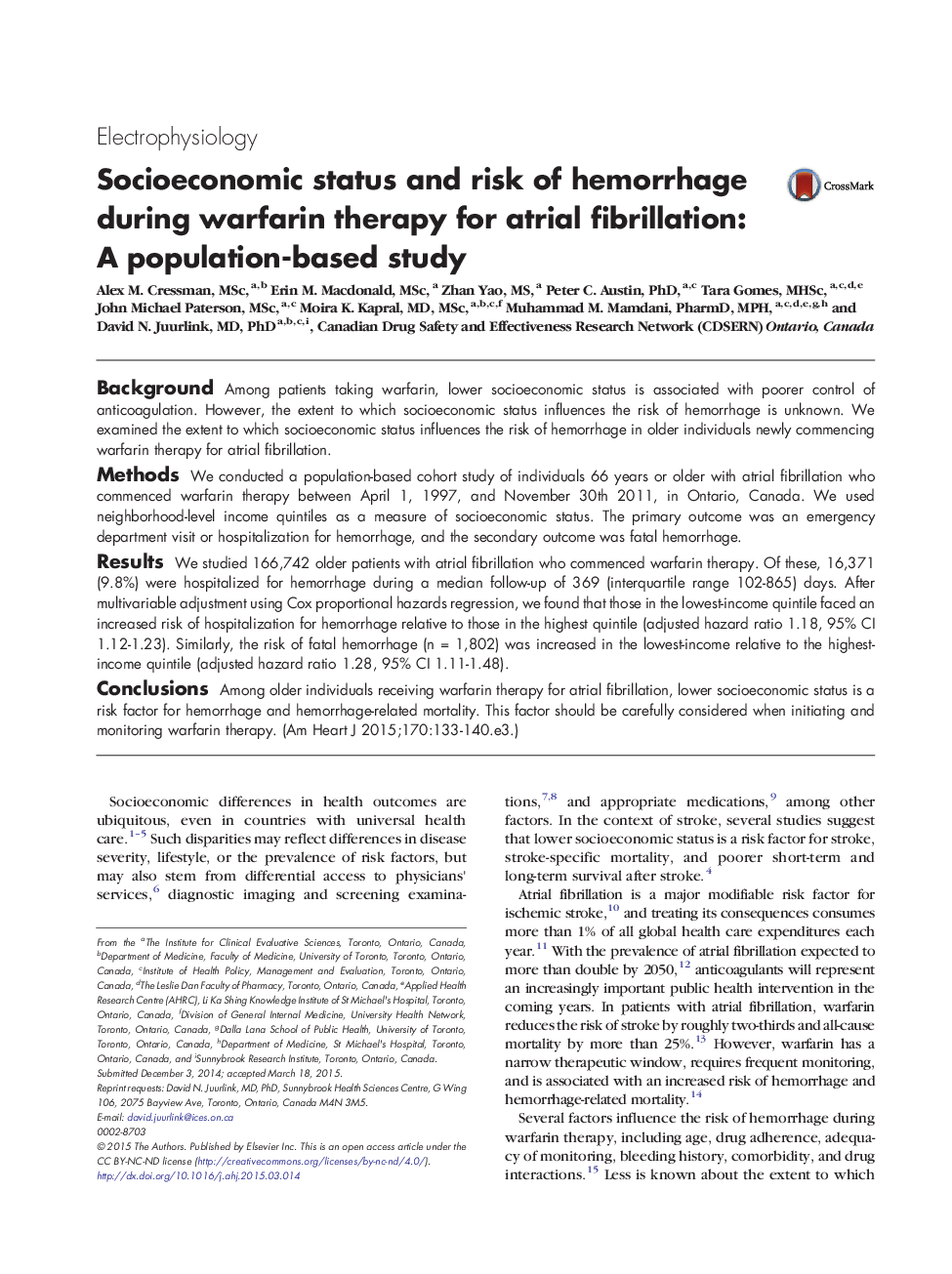| Article ID | Journal | Published Year | Pages | File Type |
|---|---|---|---|---|
| 5928165 | American Heart Journal | 2015 | 11 Pages |
BackgroundAmong patients taking warfarin, lower socioeconomic status is associated with poorer control of anticoagulation. However, the extent to which socioeconomic status influences the risk of hemorrhage is unknown. We examined the extent to which socioeconomic status influences the risk of hemorrhage in older individuals newly commencing warfarin therapy for atrial fibrillation.MethodsWe conducted a population-based cohort study of individuals 66 years or older with atrial fibrillation who commenced warfarin therapy between April 1, 1997, and November 30th 2011, in Ontario, Canada. We used neighborhood-level income quintiles as a measure of socioeconomic status. The primary outcome was an emergency department visit or hospitalization for hemorrhage, and the secondary outcome was fatal hemorrhage.ResultsWe studied 166,742 older patients with atrial fibrillation who commenced warfarin therapy. Of these, 16,371 (9.8%) were hospitalized for hemorrhage during a median follow-up of 369 (interquartile range 102-865) days. After multivariable adjustment using Cox proportional hazards regression, we found that those in the lowest-income quintile faced an increased risk of hospitalization for hemorrhage relative to those in the highest quintile (adjusted hazard ratio 1.18, 95% CI 1.12-1.23). Similarly, the risk of fatal hemorrhage (n = 1,802) was increased in the lowest-income relative to the highest-income quintile (adjusted hazard ratio 1.28, 95% CI 1.11-1.48).ConclusionsAmong older individuals receiving warfarin therapy for atrial fibrillation, lower socioeconomic status is a risk factor for hemorrhage and hemorrhage-related mortality. This factor should be carefully considered when initiating and monitoring warfarin therapy.
